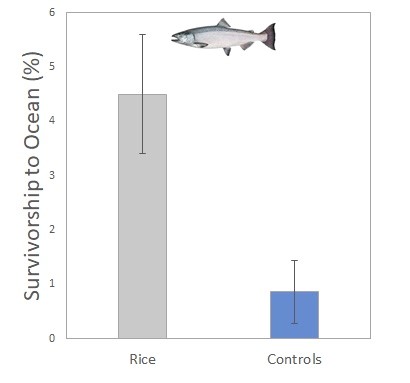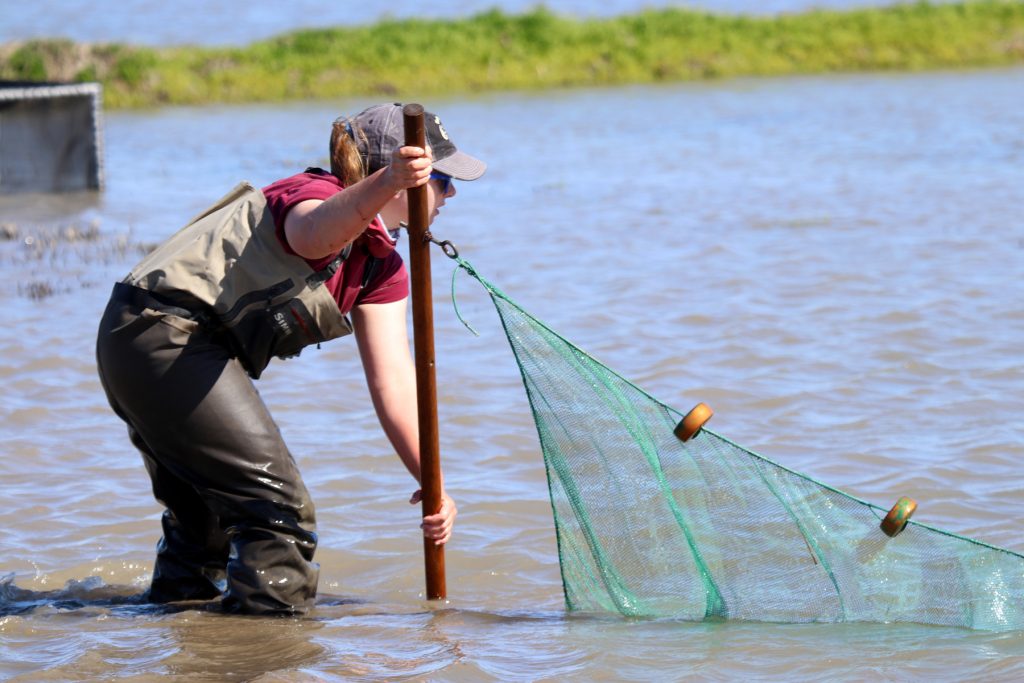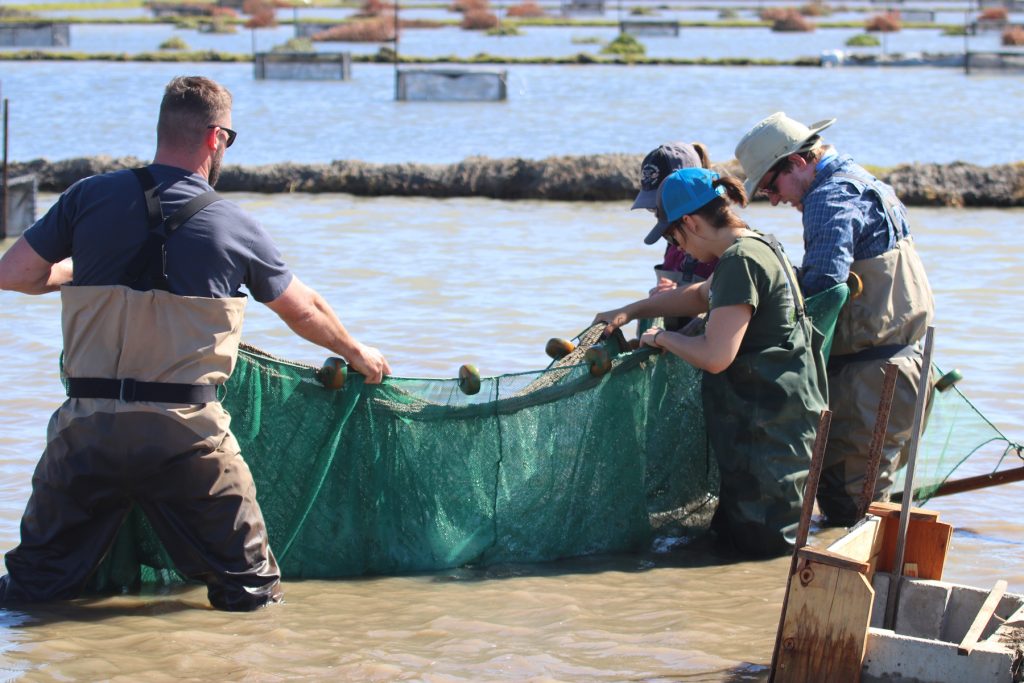By: Paul Buttner, Manager of Environmental Affairs, California Rice Commission
The second year of the California Rice Commission (CRC) Pilot Salmon Project fieldwork has yielded very positive results and should pave the way for the CRC and our fish conservation partners to develop methods to utilize winter-flooded rice fields to help struggling salmon populations.

In late-March, we released nearly 350 baby salmon that were raised in rice fields in Yolo County. Later, we released a set of control groups that were reared and released using more traditional approaches. Fish in both of these groups were fitted with a very sophisticated tag, allowing us to track their travels through the watershed and out to the ocean. Our hope was to demonstrate rice field-reared fish might have greater survivability during their journey to the ocean. We based our optimism on previous studies showing that salmon grow very fast in rice fields because of the abundance of their natural food sources in these fields. Fortunately, our 2020 graduating class of young salmon lived up to our optimism.
 Before getting to the results, it’s helpful to know what reasonably expected salmon survival rates are from year-to-year. In rare years with extremely high-water, it is possible to get to as high as 15 to 20 percent survival. In drought years, similar to the 2019/20 season, expected survival is typically around zero to 3 percent and is often close to zero.
Before getting to the results, it’s helpful to know what reasonably expected salmon survival rates are from year-to-year. In rare years with extremely high-water, it is possible to get to as high as 15 to 20 percent survival. In drought years, similar to the 2019/20 season, expected survival is typically around zero to 3 percent and is often close to zero.
The outmigration survival rate of our 2020 rice field-reared salmon was nearly 4.5 percent – nearly 4.5 times higher than our control groups and substantially higher than other similar tagging study during this period. We could not be happier with these results, and they will now serve as the basis for further work by CRC and its fish conservation partners to continue efforts to develop a larger-scale strategy to use our fields to help salmon, just as we have used them to help birds for decades now.

This project is part of ongoing and promising efforts to collaboratively reactivate the floodplains in the Sacramento Valley, benefitting fish and wildlife while maintaining farming, which is vital for our region’s economy.

We want to thank UC Davis and CalTrout for their extraordinary work in the field over these past two years. Of course, this project could not be possible without the help of our funding partners and participating growers. Special thanks to the Natural Resources Conservation Service and Syngenta for their major contributions and our long list of supporting partners including S.D. Bechtel Jr. Foundation, GrowWest, Corteva, Valent, Almond Board of California, NovaSource, Conaway Ranch and River Garden Farms. Special thanks to the U.S. Fish and Wildlife Service and California Department of Fish and Wildlife for supplying us with hatchery fish to support this important work and for technical expertise on key aspects of the work.
For more information, please contact me at pbuttner@calrice.org.



